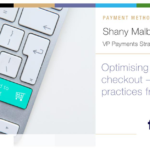It’s not a bold statement to claim that retail is one industry that feels the impact of digital transformations more than most.
As technology’s influence increases, so do people’s expectations and the various ways they shop.
With 90% of shoppers demanding an omnichannel experience, according to CX Today, retailers must test the performance of every interaction regardless of where, how, and when people shop.
No two customers are the same
Implementing a customer centric strategy to deliver seamless omnichannel experiences is more complex now than ever. Customers demand and expect a fully integrated shopping experience. The problem is that people shop in wildly different ways.
The checkout might be the final destination, but the journeys users take to get there vary. Ensuring every step, click, and action they take works, plus every variation in-between, isn’t possible without thorough software testing.
With so many options available, you can’t rely on merely testing a simple linear customer journey on a website as your average customer interacts with six touchpoints before making a purchase.
Consider this, do you know what browsers your customers use? Are they using an Android, Apple, or Windows device? Is the device a laptop, tablet, or mobile phone? What software version or operating system are the different technologies using?
You may be able to identify customers using a chrome browser on an iPhone 11 on the latest iOS, but do you genuinely know how good the user experience is? Or how the experience compares to a Samsung Galaxy S22?
Without testing your online presence from the user’s perspective (how it looks and functions at the user interface (UI)), you will never truly understand your customer’s experience.
Performance matters
Next, you need to consider how your website and mobile applications’ performance affects your customer’s experience. Too slow or glitchy, they’ll bounce to a competitor, affecting sales and negatively impacting SEO.
As a retailer, you need to load test your websites and mobile apps to ensure they don’t take too long to load or even crash. Load testing also identifies potential bottlenecks along high-converting customer journeys that cause downtime or poor performance.
Furthermore, maintaining performance during huge traffic spikes on Black Friday or during seasonal promotions is crucial when you have the opportunity for record-breaking sales. If Amazon can lose $100 million in sales during one hour of downtime on Prime Day in 2017, there’s reason to be prepared.
Bricks and clicks
Some customers will start their shopping journey online but want to collect an item in-store. Others will shop in person and expect a smooth and fast checkout experience, requiring reliable point of sale (PoS) integrations with payment devices.
PoS must connect to back-end systems and cloud-based databases to manage inventory levels, coordinate logistics — deliveries, returns, and click-and-collect — and analyse accounting data to enable company growth.
However, according to Forrester, 44% of retailers state that integrating back office systems is a significant barrier to delivering an omnichannel experience.
Testing every integration is vital to overcome this challenge. Especially when connected sales, marketing, and customer service platforms are essential for successful personalised multichannel campaigns.
End-to-end testing across the entire retail technology environment ensures every application, workflow, and back office system functions as expected and delivers an exceptional user experience.
Seamless integrations offer a wealth of data allowing you to get personal and deliver a customer-focused omnichannel experience. With intelligent software testing from the user’s perspective, you can delight your customers instead of your competitors.
Discover how to make this a reality and test like a real human with Keysight’s Eggplant test automation solution.
About the author: Mike Wager is Product Marketing Manager, Software Test Automation at Keysight Technologies.






